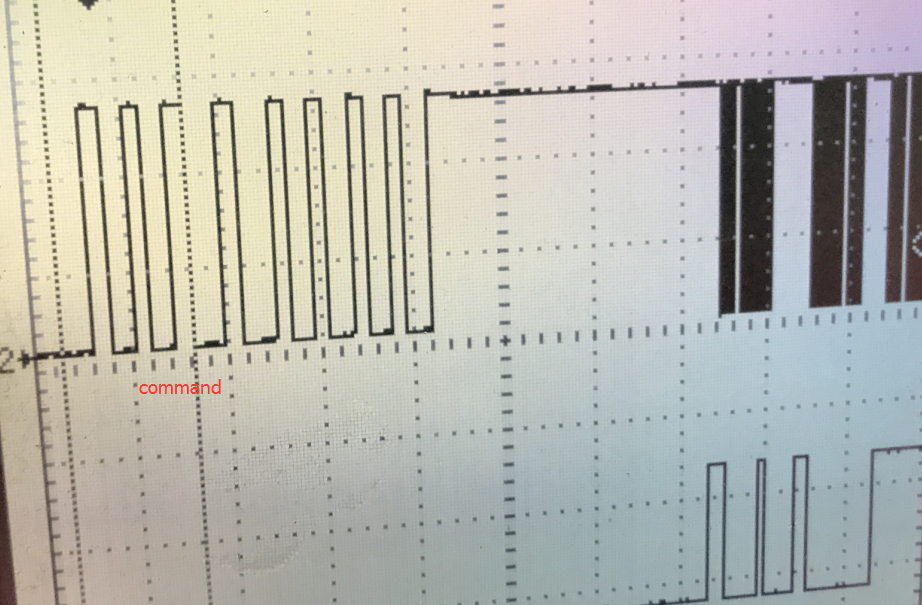Other Parts Discussed in Thread: TMS3705,
hi, everyone. please have a look at my question.
I am using tms3705 to read from tms37157. I am using a General Read Page Command to read Page 9 in which I've written 5 bytes(that is 0x4F, 0x50, 0x51, 0x52, 0x53)using a micro controller.
The problem is that I always receive only an 8 bytes resposnefrom tms37157, among which the first 5 bytes are always 0x7E, 0x00, 0x4F, 0x51, 0x02(expected to be 0x52) and the last 3 bytes are random.
It seems that from the 5th byte received , data transmition is out of control.
The TXCT and SICO signals in scope is as bellow:
It's strange that after 5 bytes transmitted, the 3 following bytes are coming with a bigger delay about 1ms or 3ms and values are random.
Could anyone point out what may cause the problem?















